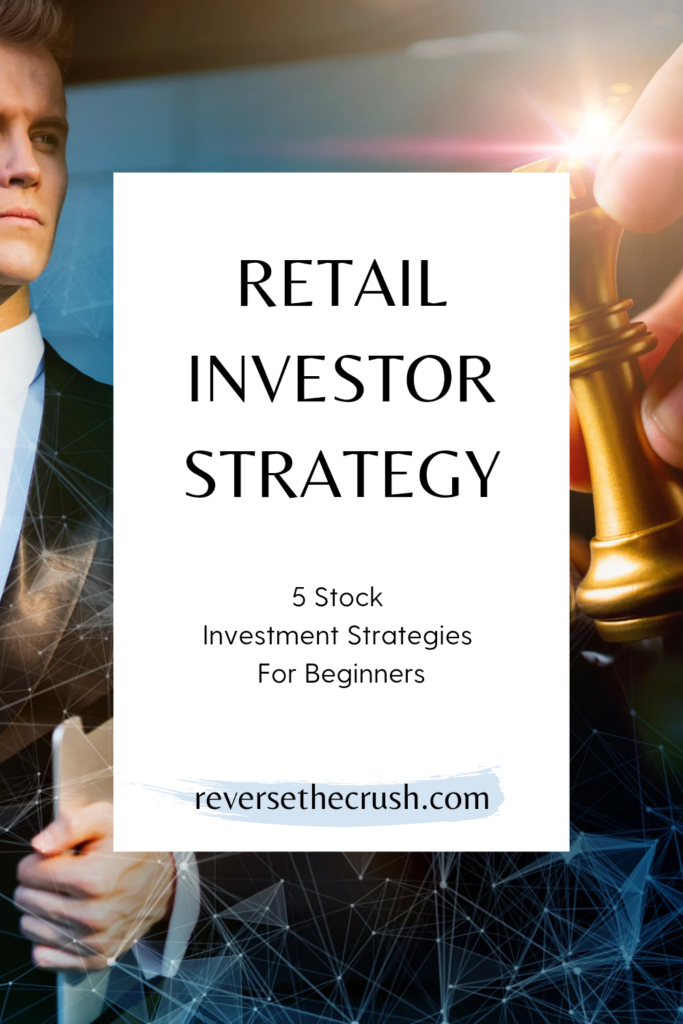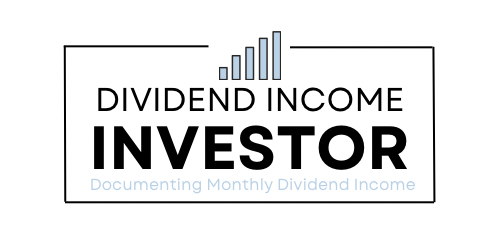Retail investor strategy — 5 stock investment strategies for new investors to consider. Dividend, value, growth, index, and mutual fund investing. I am not a licensed investment advisor and this article is not investment advice. This post may contain affiliate links.
As a retail investor, you get to choose your own investment strategy.
This is a very important step that should not be taken lightly.
In short, you should choose an investment strategy that you feel most comfortable with for the long term. Pick the investment strategy that will keep you invested.
Once you decide on a retail investor strategy, stick with it forever and master it.
In this article, I will look at 5 stock investment strategies for beginners.
Let’s dive in.
Retail Investor Strategy — 5 Stock Investment Strategies For Beginners
All investment strategies below are long term investment strategies.
The premise is that investors will maintain and stick to one of these strategies for at least 5 to 10 years.
Here are 5 retail investing strategies to consider:
Retail Investor Strategy — 5 Stock Investment Strategies For Beginners

1. Dividend Income Investing
Since my retail investor strategy is primarily dividend investing, the first stock investment strategy I will look at is dividend income investing.
In short, dividend income investing means you buy stocks that pay dividends.
Dividend investors seek dividend income from the stocks they own.
To find dividend stocks to invest in, dividend investors will look at investing metrics such as dividend yield, dividend payout ratio, earnings per share, profit margin, and price to earnings ratio (P/E).
However, the process is slightly more complex than that.
In truth, most dividend investors are value investors too. Because they attempt to buy stocks that are undervalued.
The long term goal for most dividend investors is to reach a crossover point where their dividend income covers their expenses. This way, they can live off investments without selling their investments.
Related: How To Become A Dividend Investor

2. Value Investing
Value investing is a retail investment strategy that involves selecting undervalued stocks relative to their book value or intrinsic value.
Ben Graham, the author of The Intelligent Investor, is widely considered to be the father of value investing.
Some of the investing metrics that value investors will consider are book value, price to earnings ratio (P/E), and stocks with high dividend yields.
Ideally, value investors find under appreciated stocks and hold them until the market appreciates them again.
3. Growth Investing
Growth investing is a retail investment strategy which involves investing in fast-growing businesses.
Essentially, growth investors will look for companies that are rapidly growing revenue.
They won’t pay as much attention to the current valuation and are willing to pay higher prices based on future earnings.
Instead of using price to earnings as an investment metric, growth investors will typically look at price to sales to measure what a stock should be worth.
Compared to dividend investing and value investing, growth investors can expect much greater volatility.
But if the right stocks are selected, growth stocks can provide life changing investment returns.
Related: Best Growth Stocks — 4 Stocks That Could Make You Rich
4. Index Investing
Index investing is an investment strategy that involves buying index funds or ETFs that track indices.
Simply put, index funds are funds with multiple stocks that track certain exchanges, markets, commodities, or industries.
If you are looking for the most passive and surest strategy, index investing is likely the way to go.
Based on statistics, index investors who invest in an S&P 500 index fund such as VSP will outperform 90% of professional investment advisors.
Index investors don’t have to do much research, so they focus on fees when comparing investment options.
Related: Should I Buy Stocks Or ETFs?
5. Mutual Fund Investing
Another one of the more passive ways to invest is mutual fund investing.
Mutual fund investing is an investment strategy that involves buying mutual funds, which are professionally managed investment funds.
Similar to index investing, mutual funds hold multiple stocks or bonds for a fee.
There is a management expense ratio (MER) fee that is charged for managing your money.
Compared to index funds, mutual fund fees tend to be a lot higher. But on the plus side, you do get professional advice and management if you need it.
Related: Advantages To Mutual Funds
What Is The Best Retail Investor Strategy?
The best retail investor strategy is the strategy that you are most comfortable with and the one that keeps you invested long term.
In truth, growth investing could provide the highest returns if you select the right stocks. But not everyone is cut out for the volatility. I mean, if you sell early because of the stock price movement, you will never see the growth anyways.
As such, an investor with lower risk tolerance would be better off in mutual funds, index funds, or dividend stocks.
Although the investment returns may be lower, so would the volatility.
Furthermore, the returns would be consistent.
Consequently, the best retail investor strategy is the strategy that keeps you invested.

Retail Investor Strategy — Final Thoughts
In summary, I covered 5 stocks investment strategies for new investors to consider:
- Dividend investing
- Value investing
- Growth investing
- index investing
- Mutual funds
Ultimately, there is no right answer on which is the best retail investor strategy.
The best investment strategy is the strategy that keeps you invested for the long term.
So, select the most appropriate investment strategy that suits you and stick with it for at least 5 to 10 years.
Similar Articles On Investing To Check Out
Types Of Investors In The Stock Market
Investing Metrics For Research On Stocks: 10 Key Metrics
I am not a licensed investment or tax adviser. All opinions are my own. This post may contain advertisements by Monumetric. This post may also contain internal links, affiliate links to BizBudding, Amazon, Bluehost, and Questrade, links to trusted external sites, and links to RTC social media accounts.
Connect with RTC
Twitter: @Reversethecrush
Pinterest: @reversethecrushblog
Instagram: @reversethecrush_
Facebook: @reversethecrushblog
Email: graham@reversethecrush.com


 How Often Are Dividends Usually Paid?
How Often Are Dividends Usually Paid?
